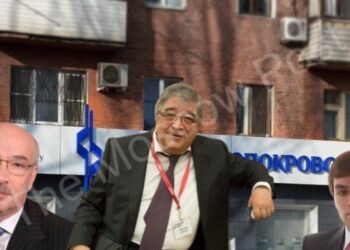“I would / suggest that
certain ideas gestures /
rhythms, like gillette razor
blades / having been used and
reused / to the mystical
moment of dullness
emphatically are / not to be
resharpened.” (e.e. Cummings)
Language and the use of language, was a concern that both fascinated and preoccupied the writers of the modern period. In many ways this was to be expected as they struggled to come to terms with the chaos and wholesale changes that were rapidly taking place around them. some writers saw not only the necessity using language to describe the world developing around them and the effects on the world within, but also the effects of the modern world on language itself. Many writers discussed the idea of exhaustion and corruption of language, two such being T. S. Eliot and Paul Auster. Auster, in his book ‘The Country of Last Things’, took an explicit and literal approach to the loss of language, outlining a world where words are lost to describe objects, leaving them alien and threatening, and objects are lost leaving the language meaningless and essentially bankrupt. Eliot, however, took a more metaphorical and symbolic approach, represented by the style and structure of ‘The Waste Land’interwoven in the wider concerns of the destruction of the modern world and contemporary society’s paradoxical fear of death while rushing towards an inevitable apocalypse.
Although acknowledged as ‘probably the most important and influential American poem of the decade’ (1.) ‘The Waste Land’ by T.S. Eliot, was originally a city poem set in London with still almost no American references at all. Describing the urban apocalypse, Eliot has faithfully recorded a decade of civilisation absorbed in destruction, an age offering bare earth, stones, pestilence and famine. From the beginning Eliot in mind the traditional form of the spiritual journeyfrom sin to salvation’ (2.) But in its final published form, Eliot first addressed the contemporary concerns with the corruption of 1anguage he played down the meditative voice of spiritual autobiography and ‘transferred the weight of the poem to Voices of Society’ so there is ‘no longer a central figure… but a medley of voices which represent the weak human masses. ‘(3.) This confusion of voices not only highlights the nature of an overcrowded, loud an disorientating modern world but also comments on the loss of language for the individual whose autobiographical speech is lost in a cacophony of voices. The masses in their unintelligible drone, drown out the voice that has something real to say. Where Auster is concerned about the loss of lapguage in very literal ways and the lack of communication that follows, Eliot concentrates on the plethora of languages and voices rendering the meaning difficult to understand.
In ‘In the Country of Last Things’, Austers’s narrator explains ‘…this creates dfficulties… insuperable barriers against understanding. Words tend to last a bit longer than things, but eventually they fade too’ (Pg 28-89) Commentator, Roger Scruton admits that this loss concerns Eliot too ‘the conservative who has risen above the fragments of his inheritance and reflected on the desolation that has been wrought in it, cannot return to an innocence which his own thinking has destroyed. ‘(4.) or as Eliot himself the writer ‘born into an unsettled society’ cannot transcend the conditions of his birth merely by wanting to do so.(5.) But Eliot’s central position on the loss of language seems paradoxical. Lack of communication stems from a growth of language, highlighted in ‘The WasteLand’ by Eliot’s allusions to historical tales and biblical references (itself perhaps the greatest example of literature and language as mass communication) and his use of languages different to our own. But critic Walter Benjamin describes and explains the paradox by saying ‘The plurality of languages signifies and original unity of language’ (6.) That is to say the mixture of styles, languages and genres in ‘The Waste Land’ signify a lost linguistic unity by dramatising its loss.
In order to develop the notion of Eliot’s concern with language, it is essential to look in more depth at ‘The Waste Land’ and try to interpret Eliot’s symbols, allusions and imagery in order to make clear how they outline his view. To begin with the title page itself, Eliot throws the reader immediately into confusion by presenting a segment of a story in two different languages and two different alphabets. Translated, the piece reads ‘For I saw with my own eyes a celebrated Sibyl at Cumae, hanging in a bottle, and when her Acolytes said “What do you wish, 0 Sibyl? “, she replied “I wish to die.”
To understand the significance of this curious opening, Eliot expects the reader to have at least a rudimentary grasp of the background of the story. The famous Cumaean Sibyl was believed to be the authoress of the Sibylline Oracles, who was granted the gift of prophecy by the God Apollo also her as many years of life as grains of sand in her hand. However, the Sibyl forgot to ask also for eternal youth, so as she continued to live she gradually withered away almost to nothing. The first four lines of the poem real personalises the story.
‘April is the cruellest month, breeding
Lilacs out of the dead land, mixing
Memory and desire, stirring
Dull roots with spring rain.’
Memory is revived, desire may not sleep and the Sibyl may not die. As authoress, the Sibyl can represent metaphorically both language and literature and perhaps even Eliot himself who suffered his own personal tortures during the construction of the poem. Language, like the Sibyl, ages and without the benefit of youthful freshness becomes corrupt with age and to all practical purposes impotent like the Sibyl, hanging in a bottle. This opening section also relates, and reoccurs throughout the poem, to the other Prophetess, Madame Sosostris, famous clairvoyante, had a bad cold’ and the narrator Tiresias who gained the power of prophecy but lost his sight. Tiresias says in ‘The Burial of the Dead’ ‘I could not / Speak, and my eyes failed. I was neither /Living nor dead, andl knew nothing’. He too is impotent. As the Sibyl aged without end, so does the modern world, growing out of proportion and while developing as many years as grains of s d, has lost its youth and the world and its language withers away to almost nothing. Eliot makes his position on this idea clear ‘I will show you fear in a handful of dust’. These 42 opening lines are very close to prose, reluctant, recalcitrant and morose. They end with the line ‘Qed’ und leer das Meer’ which translates as ‘the sea is barren and empty’, a comment surely not in place there by accident.
Tiresias, as the narrator, is more than just that. Eliot utilises his narrator further to comment on the exhaustion and corruption and loss of language, the differences of the sexes and its effects on communication in the modern world. Tiresias is utilised as a medium for the poem having the advantage of the duel knowledge of sex Tiresias knew their type and more importantly the quality of their expression. In many ways, the poem is subtly about this fashioning of this identity. Through the process the protagonist is enabled to make a prophetic statement. In Part One he uses some of the images given to him by Madame Sosostris and then assumes as his own the voice of Dante. He learns by means of her images and Dante’s words to see the city through their eyes. ‘The Waste Land’, by means of Eliot’s use of imagery and symbolic representations in this first section, uses this as a metaphor for language and the modern world. People are so bombarded with the language of history and the confusion of different viewpoints and modes of expression that they are left with the dilemma of Tiresias,’ he has gained the ability to prophecy things of great importance yet paid the price of his sight; he finally has something to say but his nguage is corrupted and exhausted by the burden of mass viewpoints, that it is unintelligible and indecipherable without the historical key, as it appears, the modern world. Regardless of the importance of the words, society is blind, the language of communication corrupted and diverse to the extent of being meaningless.
The themes of confused and corrupted language, historical allusions and the breakdown of communication, because of these elements, continues throughout the rest of ‘The Waste Land’. In ‘A Game of Chess’, Eliot begins with the literary allusion to Shakespeare’s Cleopatra and goes on to explicitly reinforce how he sees the state of communication in his modern world. ‘Speak to me. Why do you never speak. Speak ‘and later ‘You know nothing? Do you see nothing? Do you remember / Nothing?’. The second section develops, once again in quite explicit tones, criticising the focus on historical and extinct language, its current currency leaving society abandoned and adrift, lost in a modern world of change and confusion, very much like the central characters in Paul Auster’s novel.
is there nothing in your head?
But
0 0 0 0 that Shakespeherian Rag – It’s so elegant
So intelligent
‘What shall I do now? What shall I do?
I shall rush out as I am, and walk the street
With my hair down, so. What shall we do tomorrow?
What shall we ever do?’.
‘The Waste Land’ as a poem is itself a representation of corrupted and confusing language and also of the lack of communication in so much as the poem does not take the form of a linear narrative, but rather the structure of the poem appears to be cyclical. There is perhaps a link to the characters at the end of part two that talk meaninglessly in circles above the repeated line ‘Hurry up please it ‘s time’ suggesting that life can end as quickly as drinking hours and language as swiftly as rushed conversations.
In the third part ‘The Fire Sermon’, language is disposed with entirely. Lives are lived by instinct and it is no longer the language that is corrupted but the people embroiled in modern day life. The tone of the poem also changes at this point. Eliot begins with much freer verse at the start before turning into a much more regular rhythm, the rhythm of the modern, western mechanical world of taxis, typewriters and food in tins. The ‘young man carbuncular’ makes his pass at the typist in silent desperation and in a her link to Tiresias he ‘gropes his way, finding the stairs unlit… ‘In Auster’s novel, his characters cannot communicate with each other or even themselves because they do not have the words to form their thoughts and drive their imagination and in Eliot too this appears to be the case. ‘Hardly aware of her departed lover: /Her brain allows one half-formed thought to pass:
The final part of ‘The Waste Land’. ‘What the Thunder Said’, sees the corruption, loss and confusion complete. Eliot’s poetic prose becomes littered with apparent gibberish and, although still rhythmical, becomes more chaotic and discordant. His allusions to history and language are cemented in the final stanza when the words take on an old English style and spelling and Eliot alludes to Hieronymous Bosch, the famed painter of the apocalypse. The final word, repeated three times, offers a damning conclusion to the ideas presented in the rest of the poem. Not only is the wor ‘Shantih ‘ repeated three times, and indictment of the limits of gauge, but our equivalent translation reads ‘the peace which passeth understanding’.
Eliot sees a strong link between the exhaustion of language and the modern won . Like the Sibyl he begins with, the world has aged well beyond its h th and now lax’s, old and wizened, waiting for the end. Language in the same way is exhausted and corrupting under the weight of its long history, a sense of freshness never wished for. The original unity of language, as simply a form of communication, has become diverse and expanded and exhausted by its own longevity. Both by using particular allusions, symbols an imagery in the poem, and by the structure of the poem as a whole, Eliot presents both the exhaustion and corruption of language and in the form of Tiresias, the seer, shouts a warning call of the effects.









